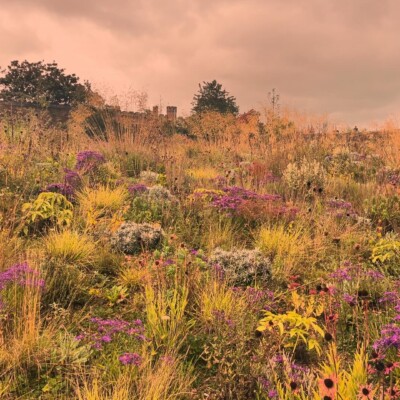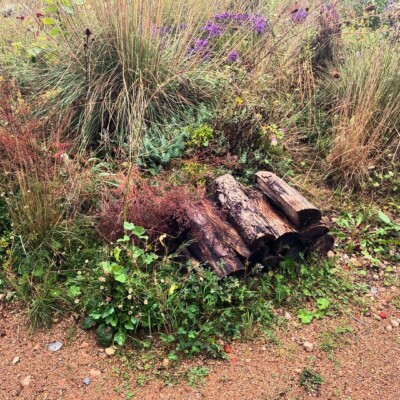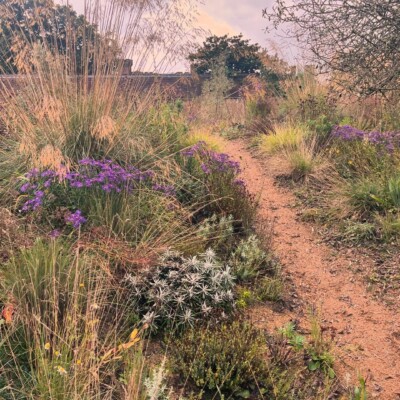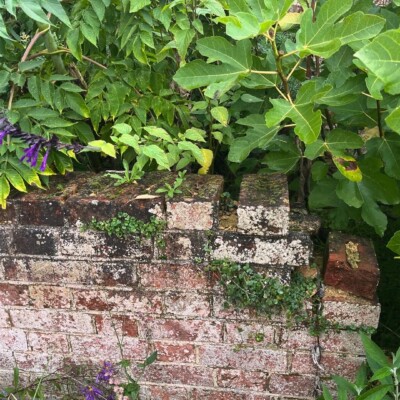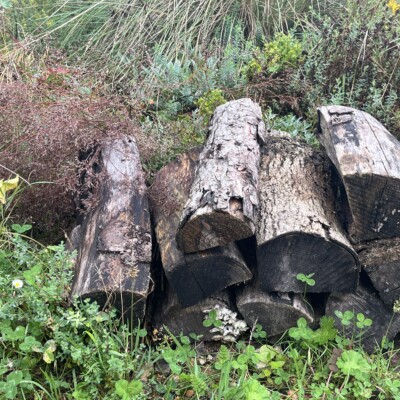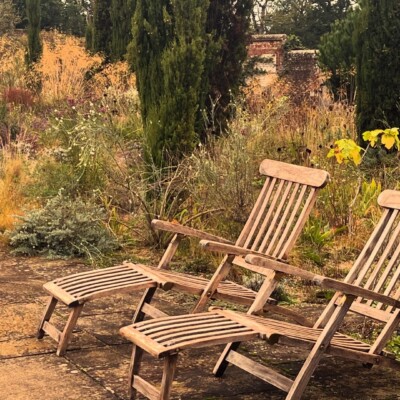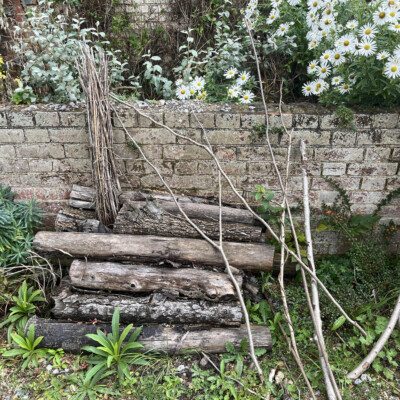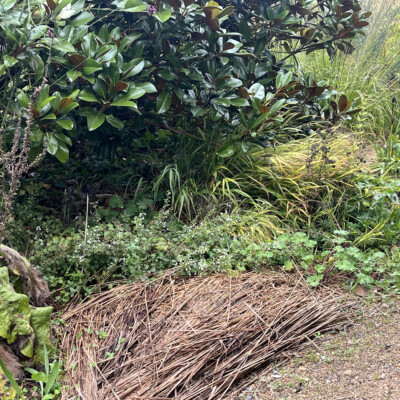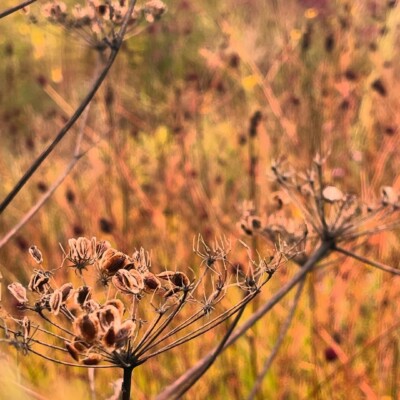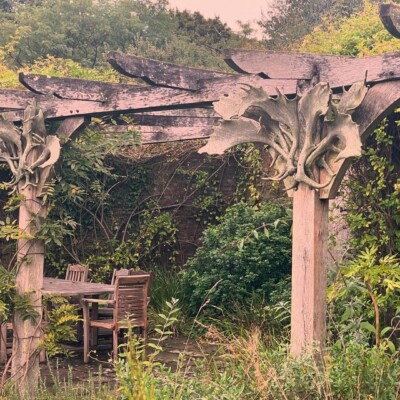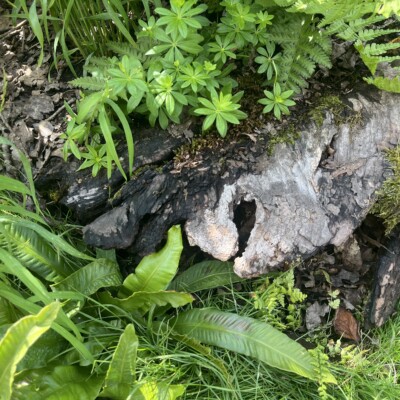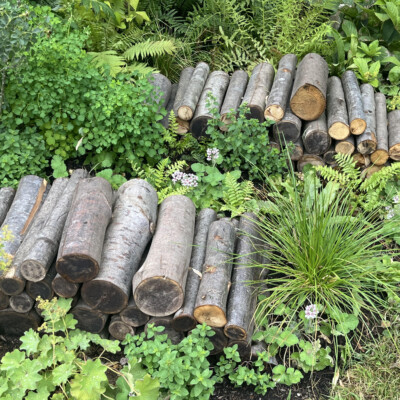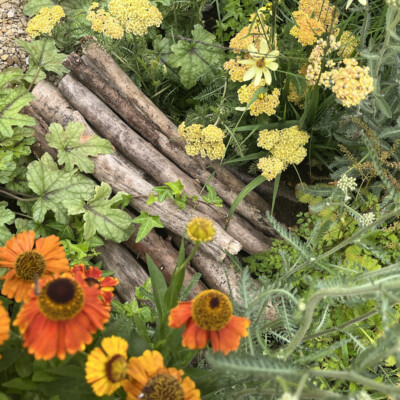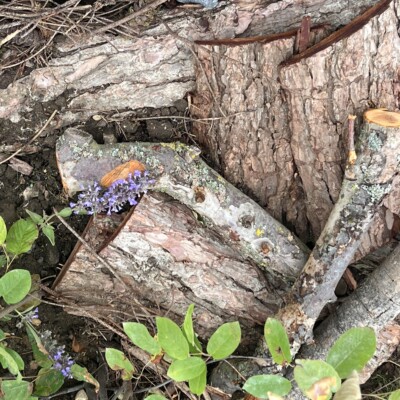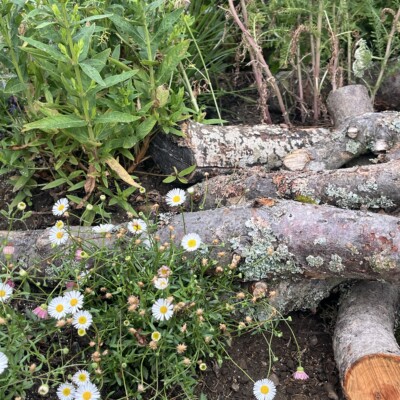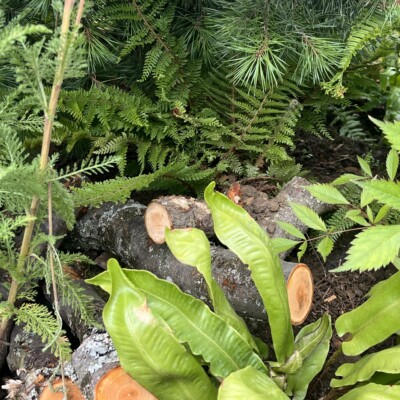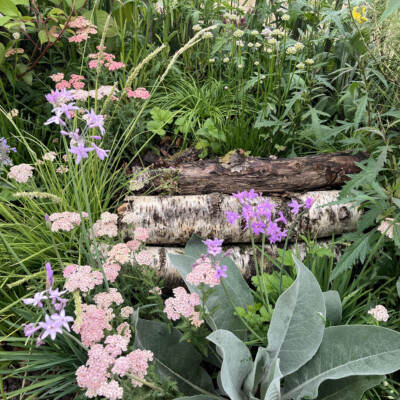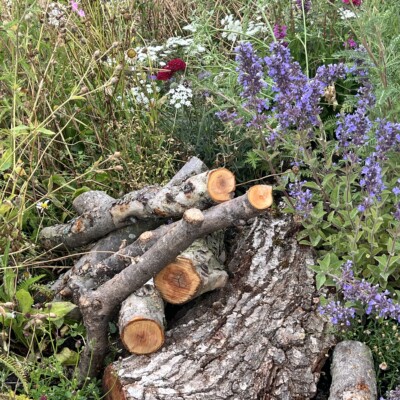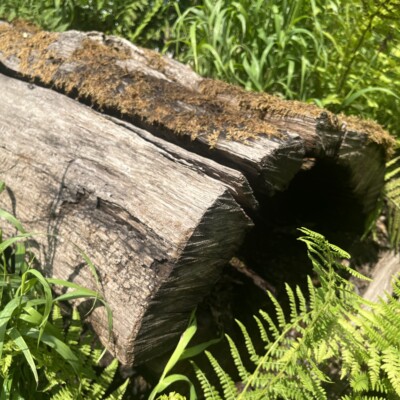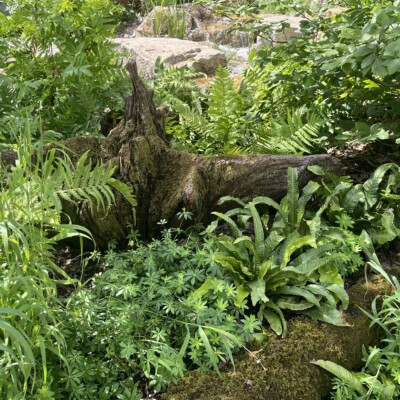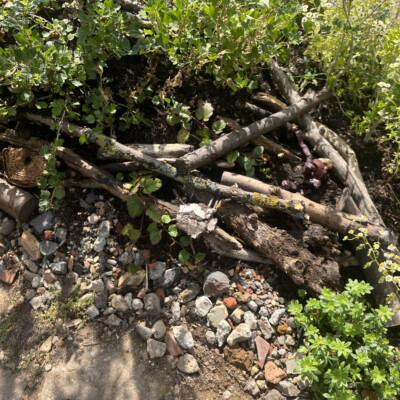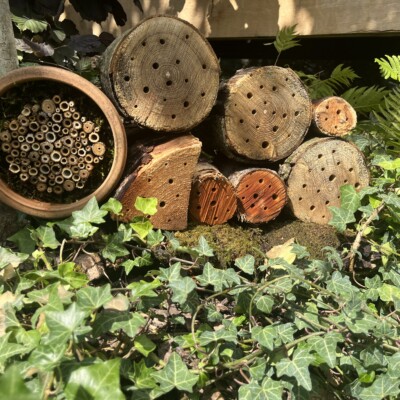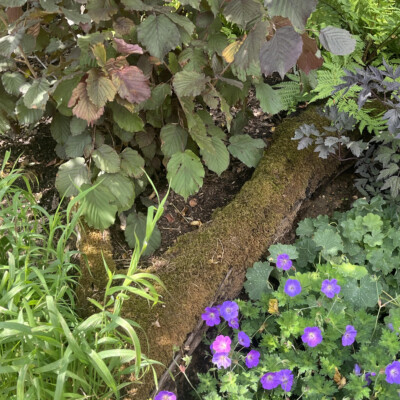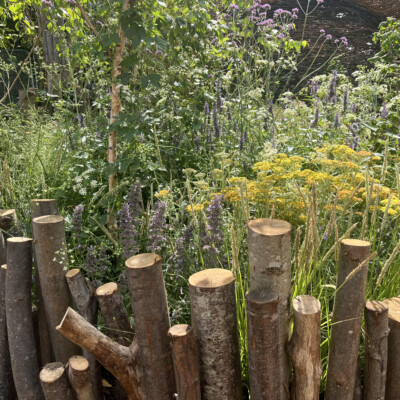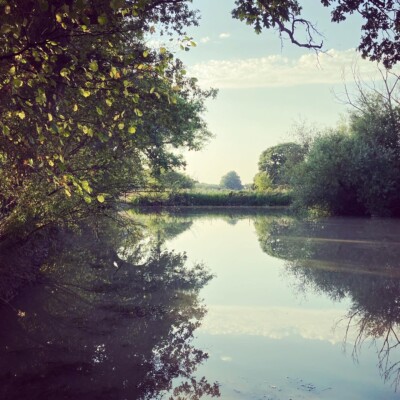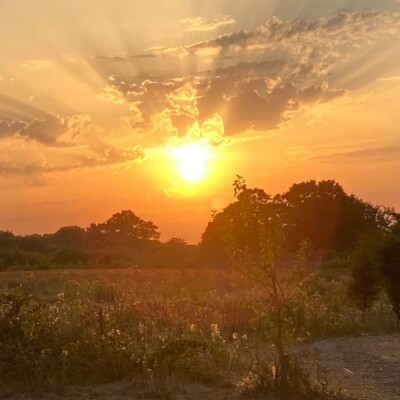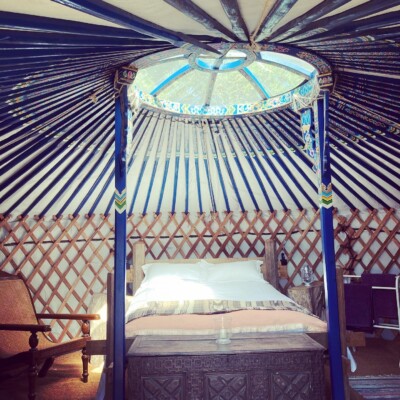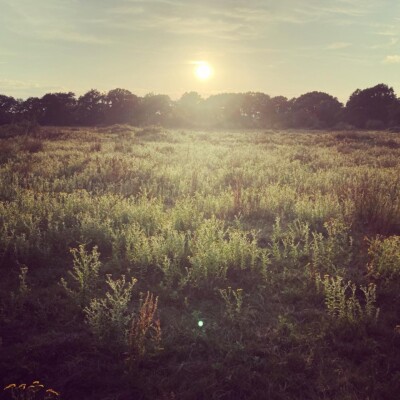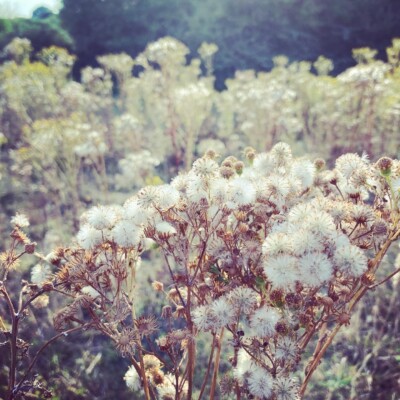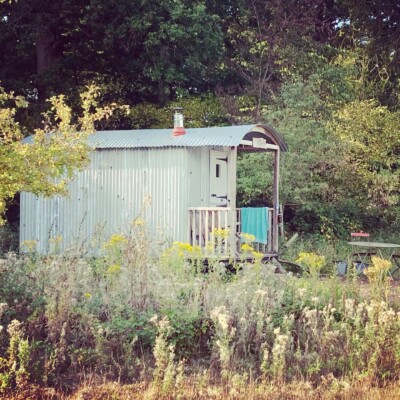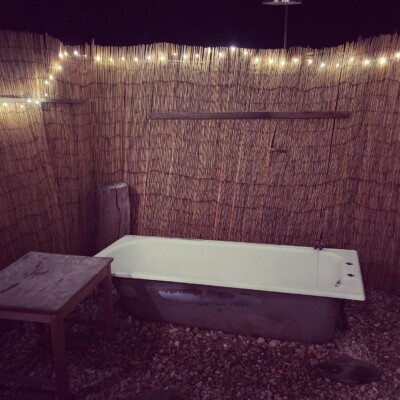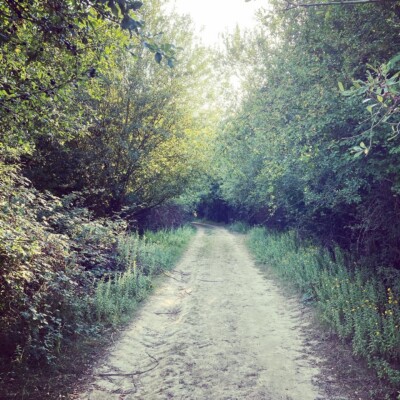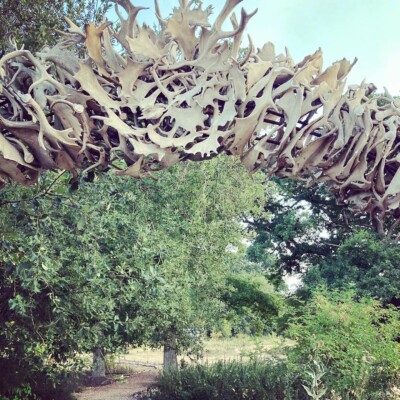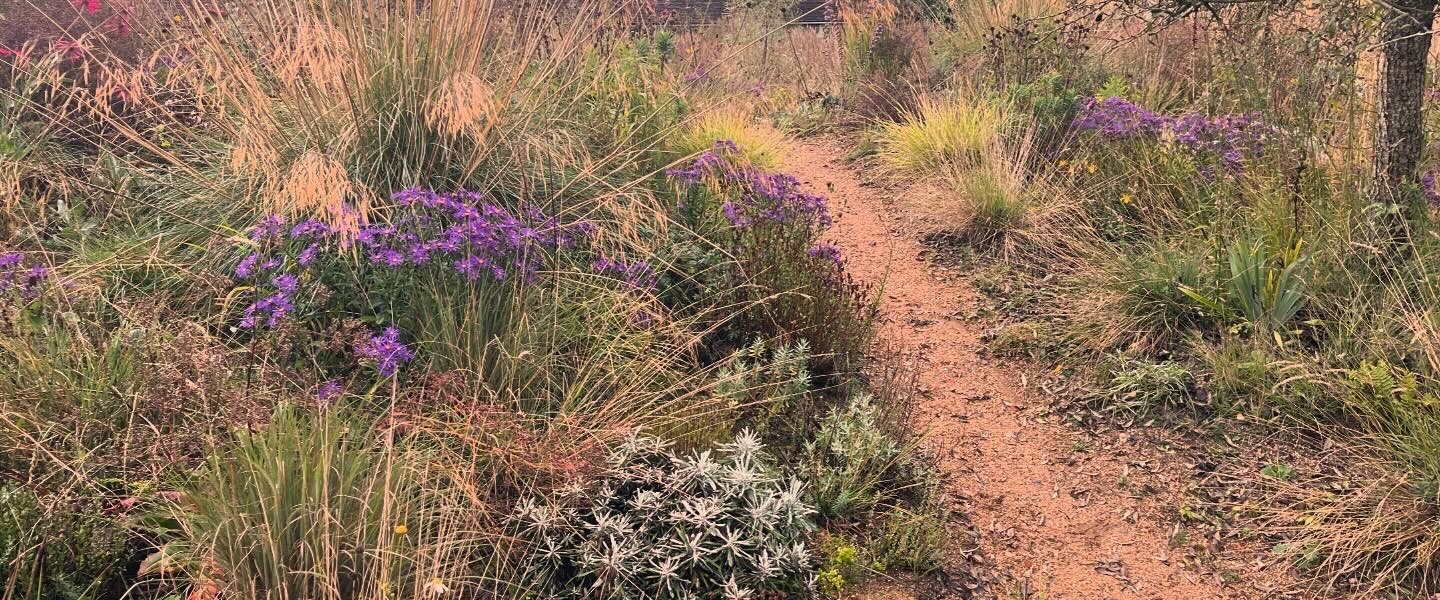
The Garden Wow List: Knepp and The Log Pile Revolution
Our Garden WOW this month?
The humble log pile—quiet, wild, essential. A reminder that the most profound beauty often begins at the garden’s wild edge.
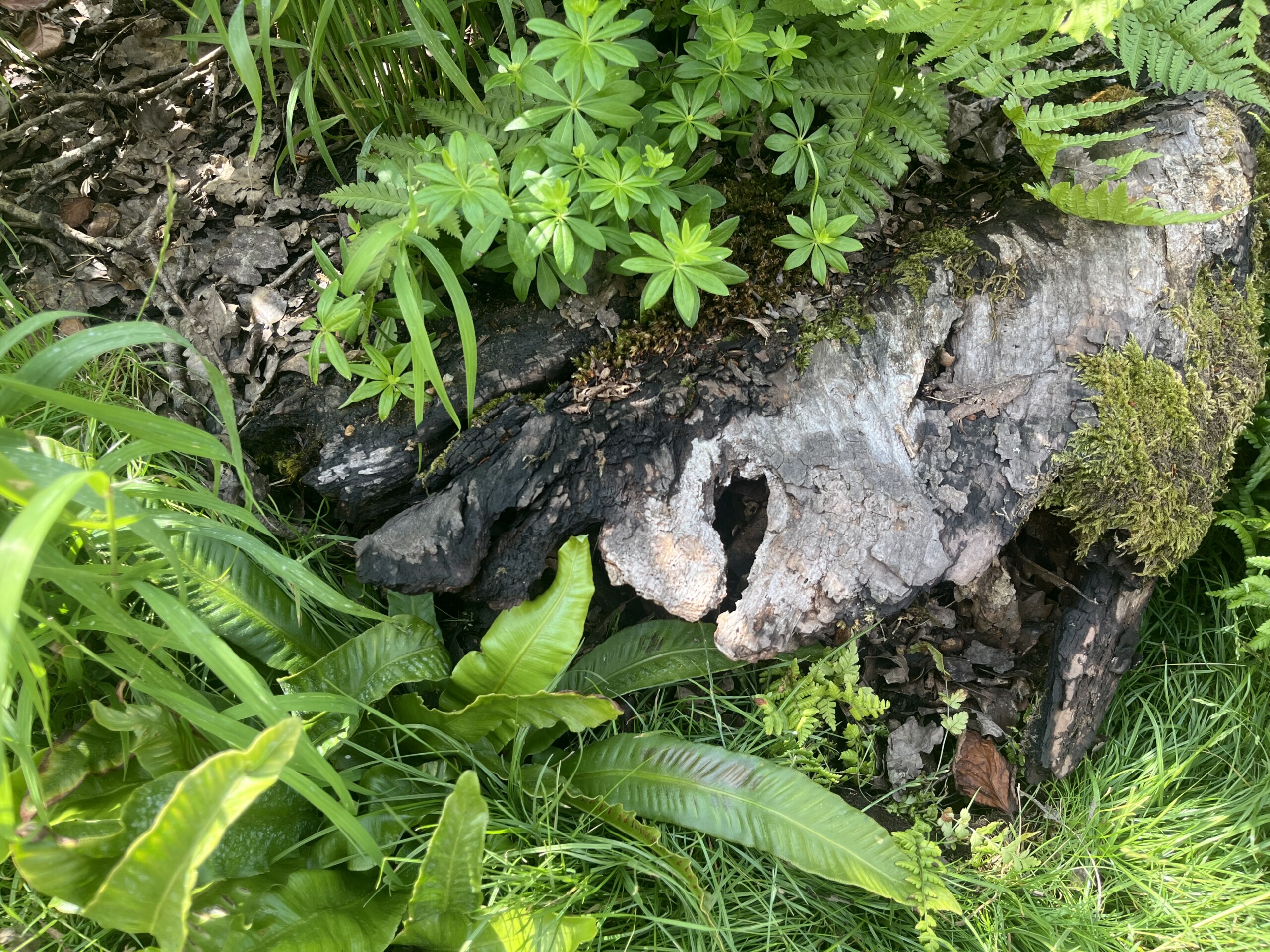
This month’s Garden WOW is a visual and ecological delight: the log pile. Last September we were very fortunate to join the Society of Garden and Landscape Designers South East Cluster Group on a tour of Knepp’s rewilded walled garden, guided by the wonderful Knepp gardening team. Inside those historic walls, instead of rigid formality, we found a garden brimming with rough textures, seedheads, and—most notably—log piles. Some damp and mossy, others dry and architectural. All brimming with wildlife. They felt like living installations—habitat and sculpture in one.
Wet and dry log pile each play a unique role in supporting biodiversity. Wet log piles, often located in damper, shaded spots or near ponds, provide ideal homes for amphibians like newts and frogs, moisture-loving fungi, and moisture-dependent insects. These damp habitats help maintain delicate ecosystems that thrive in cooler, wetter conditions. In contrast, dry log piles sit in sunnier, well-drained areas and are preferred by different species such as wood-boring beetles, solitary bees, and sun-loving fungi. By maintaining both types, Knepp creates a varied mosaic of habitats that together support a rich diversity of wildlife.
By the time we reached RHS Hampton Court Flower Show in July 2025, the echoes of Knepp were unmistakable. Nearly every show garden incorporated a log pile. Some were bold centrepieces, others nestled discreetly into planting. Designers, influenced by their interest in sustainability, steered by the variety of excellent writing about re-wilding over the years and of course Knepp’s profound rewilding effect seem to have embraced the humble log pile. Once thought of as waste, it is now design language—beautiful, purposeful, and wildlife-first. We loved how creatively they were used and how indeed beautiful they were.
The beauty of the log pile lies in its accessibility. Whether it’s a neat stack of seasoned oak or a spontaneous heap of prunings left to rot, it’s easy to replicate this nature-friendly gesture at home. It adds texture, seasonal interest and above all, habitat: inviting insects, fungi, amphibians, hedgehogs and small mammals.
Knepp’s walled garden offers a powerful blueprint for rewilding everyday landscapes. Their approach is thoughtfully bold: seed heads left standing, natural regeneration encouraged, and log piles celebrated, not hidden. It’s a philosophy that shows how modest interventions can ripple into much larger ecological gains.
If you’re inspired, start small. Leave a corner of the garden untidy. Place logs where sun and shade meet. Allow natural decay and regeneration. Walk the line between control and curation, and see the wildlife thrive. If you live in or around Lewes, there is a wonderful FREE workshop happening on Tuesday 12th August, 4pm – 5.30pm at Lewes House Garden. This incredible project which is part of the Lewes Mosaic Project runs free gardening for wildlife workshops. This one is specifically about welcoming hedgehogs, toads and lizards in your garden. We are sure log piles will have a mention.
If you plan to visit Knepp, there’s plenty to explore: Beautiful public footpaths (dogs are welcome but must be kept on leads and on the paths to protect livestock and wildlife). There are wildlife safaris, camping and glamping, a kitchen and cutting garden, and a welcoming café with delicious food as well as a shop. All of Knepp is a wonderful rewilding deep dive. We were lucky enough to go camping there a few years back and would highly recommend a visit.
Want to dig deeper? Here’s some further reading:
Sustainable Garden and The Kindest Garden by Marian Boswall are stunning books that are full of wonder insights as well as practical and inspiring ideas for creating wildlife-friendly, beautiful gardens. Marian Boswell’s website also has multiple links to some great podcasts where she expands on the themes explored in the books.
The Knepp website is a treasure trove of information about their rewilding project, workshops, the walled garden tour, and their brilliant podcast series, links to which are found in their blog.
The RHS has a great resource on deadwood and compost-heap habitats—perfect if you’re looking to start small in developing a little of your own wildlife haven in your outdoor space.
Bo Cook Garden and Landscape Design has some excellent blog posts around their approach to sustainable garden design, including a brilliant series on bird-friendly gardens and the Dark Skies initiative —great reads if you’re rethinking your garden with nature in mind, do get in touch with Bo directly to discuss her design approach.
For those in and around Lewes, check out Common Cause—a fantastic organisation supporting food growing and sustainable living in the area.

